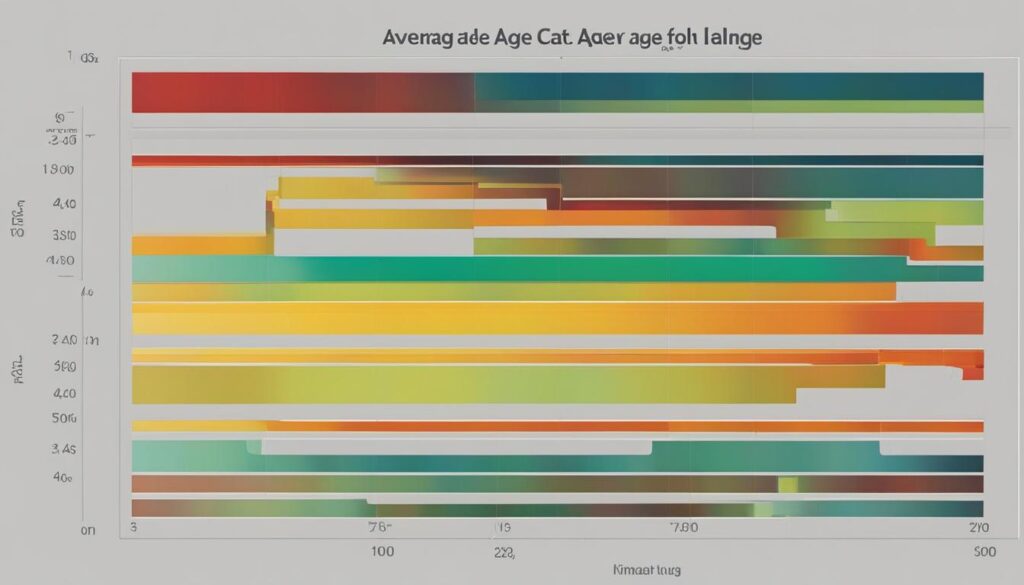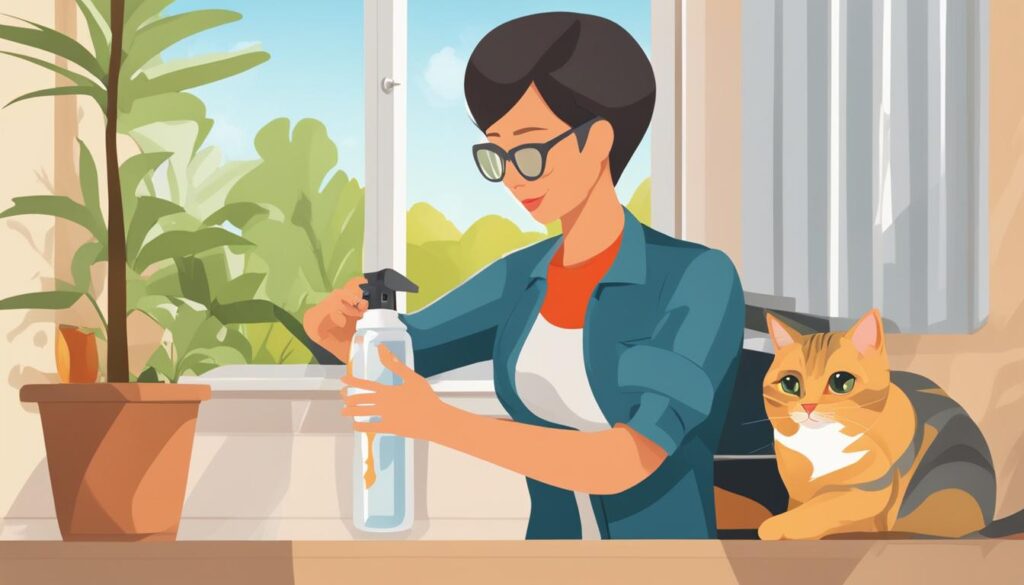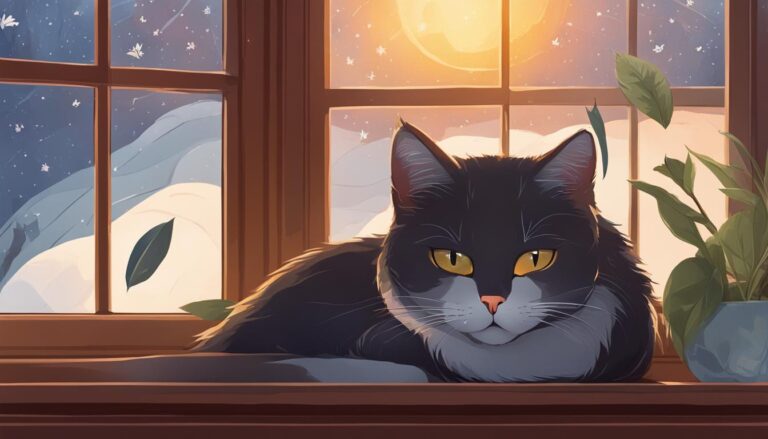Cats are fascinating creatures with unique behaviors, and one of the most important aspects of understanding your feline friend is knowing how long they stay in heat. If you’re a cat owner or considering adopting a cat, it’s crucial to grasp the duration of their heat cycle so that you can provide appropriate care and make informed decisions about their reproductive health.
Основные выводы
- Cats are in heat for an average of seven days, but it can range from 2 to 19 days.
- Signs of a cat in heat include constant vocalization, rubbing and rolling behavior, urine spraying, scratching at doors/windows, and raising their hindquarters while flagging their tail.
- Understanding the length of a cat’s heat cycle is important for managing their behavior and considering options for spaying.
- Spaying is the most effective way to prevent cats from going into heat and avoid unwanted pregnancies.
- Spaying also has additional benefits, such as reducing the risk of certain diseases.
Phases of a Cat’s Heat Cycle
In order to understand how long cats are in heat, it is important to know the phases of their heat cycle. A cat goes through five distinct phases during their reproductive cycle, each with its own characteristics and duration.
The first phase is called proestrus, which lasts for one to two days. During this phase, there are no major behavior changes in the cat. They may exhibit some mild restlessness, but it is not as pronounced as during the following phases.
The second phase, known as estrus or “heat,” is the most well-known phase of the cat’s heat cycle. It lasts for approximately seven days and is when the cat is receptive to mating. During this phase, they may display behavior such as constant vocalization, rubbing and rolling on objects, urine spraying, scratching at doors or windows, and raising their hindquarters while flagging their tail. These behaviors are all indications that the cat is in heat and seeking a mate.
The interestrus phase comes next and can last anywhere from 13 to 18 days if the cat does not ovulate. This is followed by the diestrus phase, which occurs if the cat has ovulated. Finally, the anestrus phase is the absence of any heat cycle and is characterized by a period of rest before the cycle begins again.
Age and Frequency of Heat Cycles
Female cats can start having their first heat cycle between the ages of 4 and 12 months, with the average age being 6 to 9 months. It’s important to note that individual cats may vary in their timing. The frequency of heat cycles can also differ, but typically, a cat will go into heat every two to three weeks if she does not become pregnant.
The age at which cats go into heat and the frequency of their heat cycles is influenced by various factors, including the time of year and the number of daylight hours. Cats are known as “seasonally polyestrous” animals, which means they have distinct breeding seasons. In general, cats go into heat when there are 14 to 16 hours of daylight.
In the Northern Hemisphere, this typically occurs between mid-January and mid-October. During this period, the increase in daylight triggers hormonal changes in cats, leading to their heat cycles. However, it is important to remember that individual cats may exhibit slight variations in their heat cycle timing.
Understanding the age and frequency of heat cycles in cats is crucial for responsible pet ownership. It allows cat owners to anticipate and manage their cat’s reproductive behavior effectively. Spaying your cat is recommended to prevent unwanted pregnancies and the associated challenges that come with it.

Can Cats Get Pregnant During Heat?
If you have a female cat in heat, you might be wondering if she can get pregnant during this time. The answer is yes. Cats are capable of getting pregnant if they mate while in heat. Understanding the mating behavior of cats and the breeding season can help you make informed decisions about managing your cat’s reproductive health.
Cats are induced ovulators, which means that mating triggers the release of eggs from their ovaries. However, it’s important to note that not all matings result in ovulation. Most cats require multiple matings within a 24-hour period for ovulation to occur. Once a cat becomes pregnant, she will go out of heat within a day or two. The length of a cat’s pregnancy is typically around 64 to 71 days.
Сайт breeding season for cats is influenced by factors such as the number of daylight hours. Cats tend to go into heat when there are 14 to 16 hours of daylight, which generally occurs between mid-January and mid-October in the Northern Hemisphere. During this time, female cats may experience multiple heat cycles if they do not become pregnant. It’s important to keep this in mind if you are trying to prevent unplanned litters.
| Important Points | Основные выводы |
|---|---|
| Cats can get pregnant if they mate while in heat. | Understanding the breeding season and a cat’s heat cycle is crucial for managing their reproductive health. |
| Mating stimulates the release of eggs from a cat’s ovaries. | Most cats require multiple matings within a 24-hour period for ovulation to occur. |
| Сайт breeding season for cats is influenced by daylight hours. | Cats typically go into heat when there are 14 to 16 hours of daylight. |
| If a cat becomes pregnant, she will go out of heat within a day or two. | The length of a cat’s pregnancy is approximately 64 to 71 days. |
It’s important to consider spaying your cat to prevent unwanted pregnancies and the need to manage heat cycles. Spaying involves surgically removing the ovaries and uterus, which eliminates the heat cycle. This procedure not only helps prevent pregnancy but also offers other health benefits for your cat, such as reducing the risk of certain diseases. It is recommended to spay cats before their first heat cycle, which can occur as early as 4 months of age.
By understanding the mating behavior of cats and the breeding season, you can make informed decisions about managing your cat’s reproductive health and preventing unplanned litters.

Spaying Your Cat: A Wise Decision
Spaying your cat is a responsible choice that not only benefits your pet but also helps control the population of stray and feral cats. By preventing your cat from going into heat, you are contributing to the overall welfare of cats in your community. Talk to your veterinarian about the best time to spay your cat and the potential health benefits associated with the procedure.
Заключение
Understanding the duration and phases of a cat’s heat cycle is crucial for managing their behavior and reproductive health. Cats are typically in heat for around seven days, although this timeframe can vary. It’s important to be aware of the signs of a cat in heat, which include vocalization, rubbing behavior, urine spraying, and raised hindquarters.
To prevent unwanted pregnancies and manage your cat’s reproductive health, spaying is highly recommended. By spaying your cat before their first heat cycle, which can occur as early as 4 months of age, you can eliminate the heat cycle entirely. Spaying offers other benefits as well, such as reducing the risk of certain diseases and conditions.
By understanding the length of a cat’s heat cycle and taking appropriate measures, you can ensure the well-being of your feline companion. Whether you decide to spay your cat or want to become more knowledgeable about their reproductive behavior, you are taking important steps in providing the best care for your pet.




